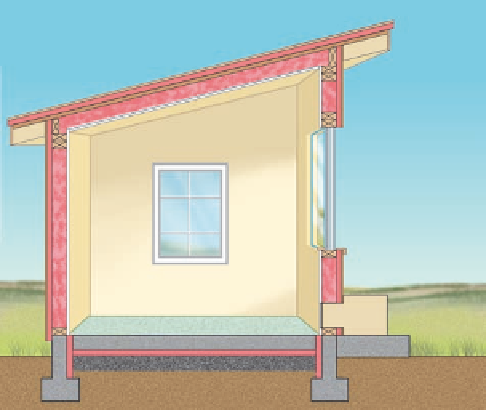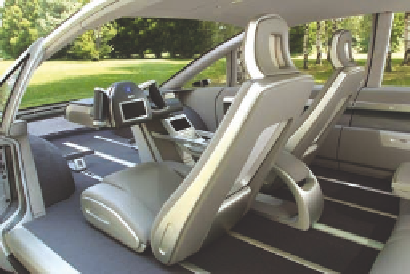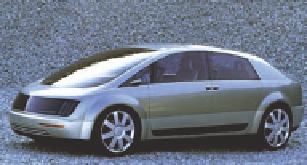Environmental Engineering Reference
In-Depth Information
Body attachments
Mechanical locks that secure
the body to the chassis
Air system
management
Universal docking connection
Connects the chassis with the
drive-by-wire system in the body
Fuel-cell stack
Converts hydrogen
fuel into electricity
Rear crush zone
Absorbs crash energy
Drive-by-wire
system controls
Cabin heating unit
Side-mounted radiators
Release heat generated by the fuel cell,
vehicle electronics, and wheel motors
Hydrogen
fuel tanks
Front crush zone
Absorbs crash energy
Electric wheel motors
Provide four-wheel drive;
have built-in brakes
Figure 13-25
Solutions:
prototype Hy-Wire car developed by General Motors. It combines a hydrogen fuel
cell with drive-by-wire technology. The Hy-Wire consists of a skateboard-like chassis and a variety of snap-on
bodies. General Motors claims the car could be on the road within a decade, but some analysts believe that it
will be 2020 before similar cars from various manufacturers will be mass produced. (Basic information from
General Motors)
Science: Saving Energy in Existing Buildings
We can save energy in existing buildings by
insulating them, plugging leaks, and using energy-
efficient heating and cooling systems, appliances,
and lighting.
Here are some ways to save energy in existing
buildings:
R-60 or higher insulation
R-30 to
R-43 insulation
R-30 to R-43 insulation
Insulated glass,
triple-paned or
superwindows
(passive solar
gain)
House
nearly
airtight
■
Insulate and plug leaks.
One-third of the heated air
in typical U.S. homes and buildings escapes through
closed windows and holes and cracks (Figure 13-28)
—roughly equal to the energy in all the oil flowing
through the Alaska pipeline every year. During hot
weather, these windows and cracks let heat in,
increasing the use of air conditioning. Although not
very sexy, adding insulation and plugging leaks in a
house are two of the quickest, cheapest, and best ways
to save energy and money.
■
Use energy-efficient windows.
Replacing all windows
in the United States with energy-efficient windows
would cut expensive heat losses from houses by two-
R-30 to R-43
insulation
Small or no north-facing
windows or superwindows
Air-to-air heat exchanger
Figure 13-26
Solutions:
major features of a
superinsulated
house.
The house is so heavily insulated and airtight that heat
from direct sunlight, appliances, and human bodies can warm it
with little or no need for a backup heating system. An air-to-air
heat exchanger prevents buildup of indoor air pollution.








